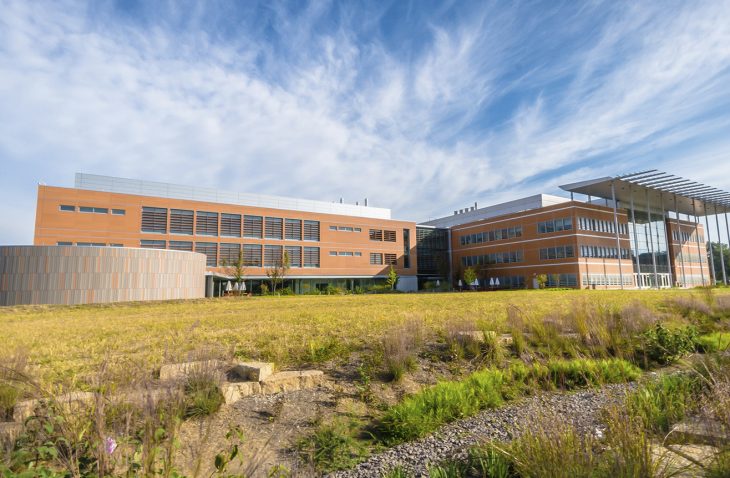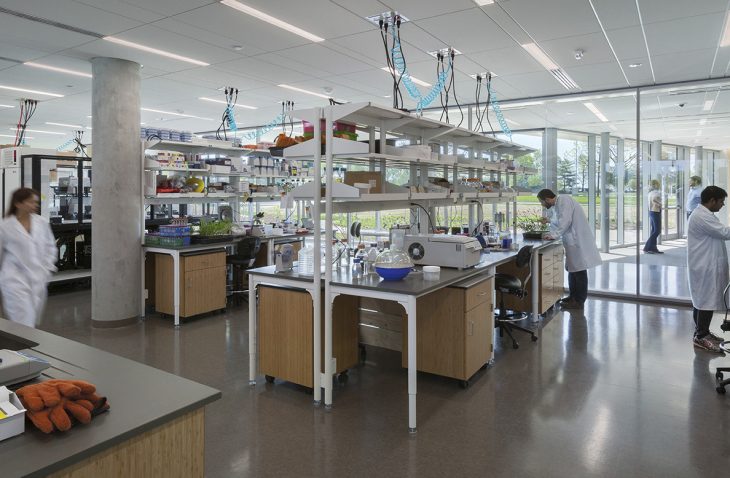New Research Laboratory with Intelligent Building Strategies
The Donald Danforth Plant Science Center, the world’s largest independent nonprofit research institute focused on plant science, utilizes several intelligent building technologies in its flexible, new, state-of-the-art William H. Danforth Wing.
The 136,000-sf addition provides an optimum environment for the plants and the research and is designed to adapt to future changes in the way science is conducted. The building is also a high-performance facility, featuring a high-efficiency magnetic bearing chiller, larger AHUs and efficient duct layout to reduce fan horsepower, and heat recovery on the exhaust airstream to pre-treat outside air. The project is designed to perform 30% better than ASHRAE 90.1-2007.
Intelligent building strategies supporting the facility’s high performance include a robust sub-meter energy monitoring system that allows the owner to diagnose sub-par operation of key systems. For example, analysis of data from the lab exhaust energy recovery system identified higher-than-expected energy consumption, which building operators promptly addressed. Additional intelligent building strategies include controls to reduce ventilation rate during unoccupied periods; staged fume exhaust fan control with velocity determined by wind study to reduce energy use; and daylighting controls.
Facility spaces include three levels of flexible labs, an advanced plant growth facility with 34 controlled-environment chambers, a plant phenotyping facility, a biocomputing suite, a maker shop for the development of new instruments, a 95-seat theater with state-of-the-art audio, video and teleconferencing, open office suites, gathering spaces, and computational facilities for up to 100 scientists.
Key MEP design supporting flexibility includes a grid of outlets for electrical service, data and gases in the ceiling of each floor, allowing researchers to easily move benches and cabinets; infrastructure support for robotic equipment in various spaces; and separate equipment rooms where energy-intensive equipment – and the heat and noise it generates – is isolated from the research. RO and DI water systems, vacuum systems, a standby diesel generator and redundant chilled water system ensure experiment continuity.
With scientists from all over the world working at and visiting the center, the addition serves not only as a model for flexible, state-of-the-art research facilities, but also a showcase of the engineering that supports the research.









